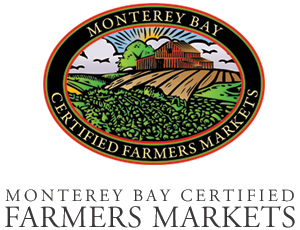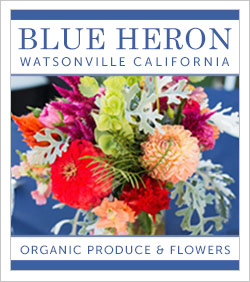July 2022 marks the 46th anniversary of the Monterey Bay Certified Farmers Market. To put it in perspective, the year was 1976; leisure suits and disco music were the rage, the internet didn’t exist, “Google” was still a noun, and many married couples that frequent our markets hadn’t even met yet. Even though farmers markets are sometimes taken for granted today, the notion of buying food directly from a farmer was not what many people even thought possible, let alone desirable in the 70s.
The Monterey Bay in those days was an unspoiled paradise when compared to today’s cities and snarled traffic. The organic food movement was in its infancy. Starry-eyed dreamers were dreaming of being able to grow food without chemicals, pesticides our other synthetic inputs. One group was able to connect and together created a plan to not only grow food without chemicals, but also to sell it to their friends and neighbors in that would become known as a farm-direct business model. This group would gather weekly and sold their harvests off the back of their trucks or the trunks of their cars.
Jerry Thomas, Manuel Netto, Bob ”The-Egg-Man” Harris, and Nick Pasqual formally started The Monterey Bay Certified Farmers Market, as classified by the State of California. This certification was given to farmers who sold only what they grew. In those freewheeling early days, there were a lot of “free thinkers” who’d buy food elsewhere and then call it their own at the market. Other tales of creative capitalism by well-meaning vendors spotlighted the need for a self-governing body. People being what they are, early attempts at self-regulation created some tension between the farmers. “I was here first so I’m the only one who can sell this crop or that fruit” was a common source of contention. “He’s in my space” or “He’s undercutting my price” could create grudges and petty squabbles.
Cooler heads eventually prevailed. It’s growing popularity supported expansion outside of Santa Cruz County into Monterey County in 1977. A market manager was needed, fast. In 1993 a newspaper ad for a market manager-cum-babysitter was posted. Among the 97 applicants was Catherine Barr. “My husband Jon and I had just returned from Mexico, near Lake Chapala, where we’d been growing flowers for the previous two years,” Catherine recalled with a chuckle. I was working for an agricultural company in Watsonville. I thought ‘what the heck’ so I applied. I was expecting to go through a series of interviews the way it’s done in corporate America.”
It didn’t quite go as imagined. The interview went long into the evening, and all 11 members of the board were present. “I thought it went pretty well,” she said, “but I didn’t hear anything for a couple of weeks. Then, one day I got a call from Chris Banthien telling me I’d gotten the job. She dropped off a rinky-dink computer for me to use and that was that!” There were 42 vendors by that time, as compared to over 100 today. Petty disagreements between vendors were eventually ironed out, including how many farmers could sell a certain fruit or vegetable.
“There were very few farmers who were only farmers,” Catherine explained. “Everyone had a day job.” Some of those early vendors are still there today. New Natives’ Ken and Sandra and Jim-the-Potter (Parrot Ranch Pottery) are old timers. Bob-the-Egg-Man was there until his passing earlier this year. I guess you’d call the market OGs now!”
The market’s earliest location was at the Live Oak school. The Med Fly infestation at that time limited the transportation of home grown fruits and vegetables and that became the primary consideration as to where the market would be located. From there the market moved to Twin Lakes before beginning their relationship with Cabrillo College in the 90s. “Our location at Cabrillo was across the street from where we are now.” Catherine chuckled as she described the site as “The Hole.” “It’d be foggy while everywhere around us was sunny and clear. It’s where the new Cabrillo Theater is today.”
Eventually the market moved to its present location, occupying only the middle row. As the popularity of the market grew, so did the number of vendor applicants until it was necessary to start a waiting list— which is a long one.
“Lots of vendors want in,” Catherine explained. “Our primary responsibility is to our current vendors. We need to protect them by not flooding the market with too much of this or that.”
One of the more creative innovations occurred around 2010 with the creation of Farmers Market Big Bucks. “We’d have people always running out of cash while shopping. Not every vendor offered the ability to buy using a credit card. People would go off on wild goose chases to find an ATM and then never return. The Market Bucks offered the convenience of cash if you ran out, and every vendor accepts it in lieu of cash. It’s been very successful.”
The pandemic in 2020 was the latest challenge. Spacing between vendors was widened, and masking became a requisite for shoppers and vendors alike. But the market has not just survived, but continues to thrive. It’s not just a place to shop, but to experience firsthand the community connections between farmer and shopper. We see familiar faces every week, and make new friends too.
Join Us for Our Party!
Please take a moment to stop and appreciate the weekly gathering that is the farmers market. The birthday shindig happens Saturday, July 23 from 8 am until 11:30. There will be free birthday cake, face painting for the kiddos, as well as a giveaway of reusable produce bags.
We will also have our iconic WTF (Work the Farm) T-shirts for sale again as well as caps.



